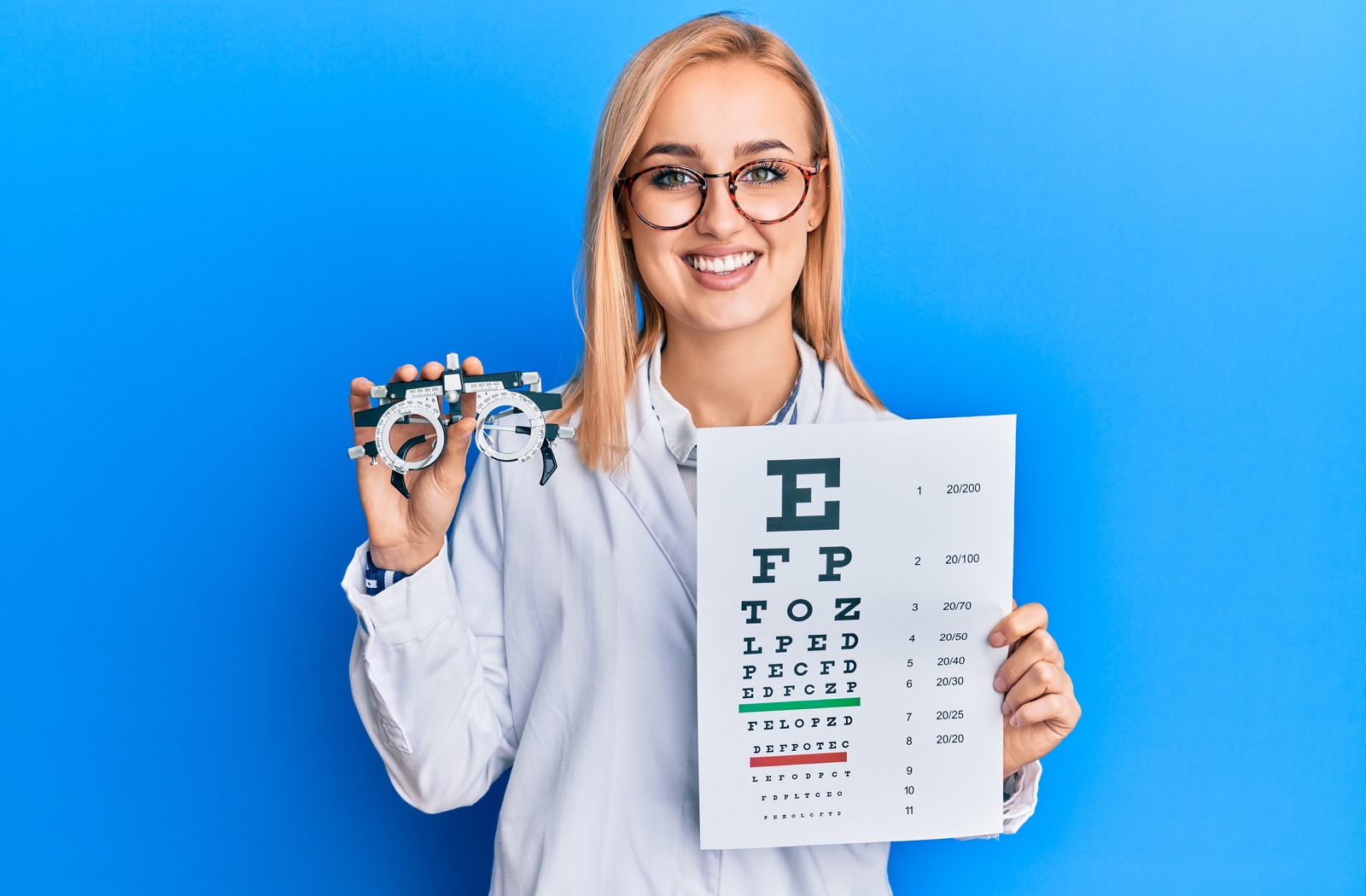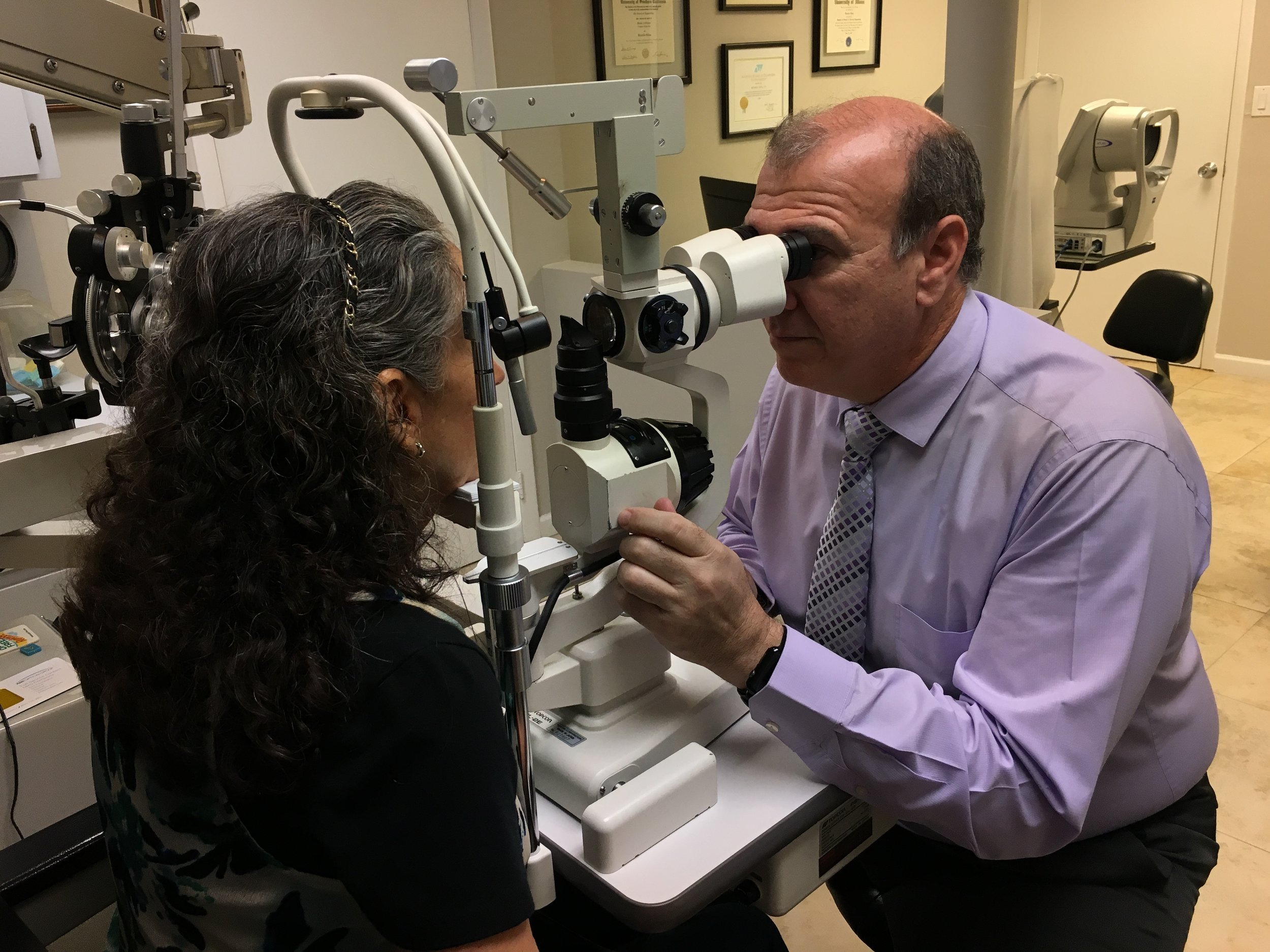Why Selecting an Eye Doctor Optometrist is Necessary for Your Eyes
Why Selecting an Eye Doctor Optometrist is Necessary for Your Eyes
Blog Article
Discovering the most up to date Technological Improvements in Optometry and What They Mean for Optometrists
In the ever-evolving area of optometry, current technical improvements are improving just how experts come close to eye treatment. From the accuracy of Optical Coherence Tomography to the nuanced insights supplied by AI-driven diagnostic devices, these innovations are setting new requirements in person analysis and therapy. Teleoptometry is poised to redefine accessibility, making certain that expertise goes beyond geographical constraints. As these improvements penetrate the technique, eye doctors are faced with the difficulty of embracing these devices to enhance individual outcomes. The concern continues to be: just how will these technological shifts redefine the roles and responsibilities within the profession?
Developments in Diagnostic Equipment
Advancing the area of optometry, technologies in analysis tools have transformed the way eye treatment experts assess and identify aesthetic disabilities and ocular problems. The previous decade has actually experienced significant technical developments, enabling even more detailed and accurate analyses.
An additional trick advancement is the intro of advanced corneal topography systems, which map the surface curvature of the cornea with accuracy. These devices are specifically beneficial for suitable call lenses and diagnosing corneal problems. Electronic retinal imaging has changed conventional ophthalmoscopy, using thorough, scenic sights of the retina that assist in complete visual evaluations.
The growth of wavefront aberrometry has actually also been important, allowing the evaluation of refractive errors with unparalleled accuracy (Eye Doctor). This technology assists in tailoring corrective lenses and enhancing medical outcomes for refractive surgical procedures. Collectively, these analysis innovations encourage optometrists to provide premium patient treatment, making certain very early intervention and customized treatment approaches, eventually enhancing aesthetic wellness outcomes
AI in Person Management
Building on the structure of sophisticated analysis tools, the incorporation of expert system (AI) in individual monitoring represents a transformative jump for optometry. AI systems are significantly employed to enhance performance, accuracy, and customization in person care. By assessing large quantities of data, AI can identify patterns and predict potential ocular problems, allowing eye doctors to customize treatments better. This capacity is essential in managing persistent eye illness such as glaucoma and diabetic person retinopathy, where early discovery and continuous monitoring are essential.
Furthermore, AI-driven systems help with structured patient communications and management processes. Automated scheduling, virtual assessments, and personalized follow-up strategies not just enhance client satisfaction however likewise enhance time monitoring for practitioners. These systems can triage clients based upon the urgency of their conditions, guaranteeing that those in important need get punctual interest.
Additionally, AI boosts decision-making by providing optometrists with evidence-based recommendations and therapy pathways. By incorporating information from electronic health and wellness records, AI devices provide insights that educate scientific choices, reducing the danger of errors and enhancing individual end results. As AI remains to evolve, its role in patient administration will likely broaden, reshaping the landscape of optometric treatment.
Advancements in Retinal Imaging
In the world of optometry, retinal imaging has actually observed remarkable technological innovations that are boosting diagnostic capacities and individual care. Advancements such as Optical Comprehensibility Tomography (OCT) and fundus photography have actually transformed how optometrists examine the retina and visualize. OCT, particularly, gives high-resolution, cross-sectional pictures of the retina, enabling the detailed examination of its layers. This capacity is invaluable for early detection and administration of problems like glaucoma, diabetic retinopathy, and age-related macular deterioration.
Enhanced imaging modalities like OCT angiography are additional refining diagnostic accuracy. Optometrist Chino. Such advancements help with the recognition of minute retinal modifications that can represent illness development.
In addition, improvements in fabricated intelligence are boosting retinal imaging by making it possible for computerized evaluation of big datasets. These systems help eye doctors in determining patterns indicative of pathology, thereby improving analysis precision and efficiency. Jointly, these developments are changing retinal imaging right into a foundation of modern-day eye care, boosting end results and expanding therapeutic opportunities.
Teleoptometry's Expanding Function
Teleoptometry is significantly coming to be a vital element of eye treatment, driven by advancements in digital interaction and diagnostic tools. As optometry welcomes electronic makeover, teleoptometry assists in remote consultations, allowing eye doctors to extend their services beyond standard boundaries. This is particularly advantageous in rural and underserved areas where accessibility to specialized eye treatment is frequently limited. By leveraging high-resolution video conferencing and advanced retinal imaging, optometrists can conduct comprehensive eye exams from afar, guaranteeing timely medical diagnosis and treatment.
The assimilation of expert system (AI) more improves teleoptometry, enabling the evaluation of visual information and helping in the detection of ocular problems such as glaucoma and diabetic retinopathy. AI-powered formulas can rapidly translate intricate imaging information, giving optometrists with valuable understandings that boost professional decision-making.
Furthermore, teleoptometry supports connection of care via smooth assimilation with digital health documents (EHRs), allowing optometrists to preserve comprehensive client backgrounds. When seeking advice from with various specialists., this guarantees that clients receive consistent and personalized treatment also.
Despite these benefits, challenges remain, consisting of making certain information safety and managing client assumptions. Teleoptometry represents a substantial stride in the direction of more accessible, effective, and patient-centered eye care. As modern technology evolves, its function is positioned to increase further.

Future Fads in Eye Care
A myriad of cutting-edge patterns is readied to reshape the future of eye treatment, driven by technological advancements and the advancing requirements of clients. One substantial trend is the assimilation of fabricated knowledge (AI) in diagnostics, which guarantees to boost the precision This Site and efficiency of eye assessments. AI algorithms can analyze large quantities of data from retinal photos, possibly detecting problems like diabetic person retinopathy and glaucoma earlier than typical approaches.
Moreover, customized medicine is getting grip in optometry, with hereditary testing educating personalized therapy plans. This method intends to optimize person results by tailoring treatments to private hereditary profiles. Wearable technology, such as smart call lenses, is also imminent, providing real-time surveillance of intraocular pressure or sugar degrees, thus supplying constant insights into systemic and eye wellness.
The adoption of augmented reality (AR) and online truth (VR) in training and person education is one more arising pattern. These innovations offer immersive experiences that can boost understanding and skills both for people and optometrists. As these patterns evolve, eye doctors need to stay abreast of technological innovations to supply sophisticated treatment, ensuring improved patient end results and contentment in the vibrant landscape of eye treatment.
Conclusion

Collectively, these diagnostic innovations equip optometrists to supply superior individual care, guaranteeing very early treatment and tailored therapy techniques, ultimately improving visual health end results.

As these modern technologies continue to evolve, eye doctors must adapt and include them into method, eventually optimizing process performance and elevating the requirement of eye care delivered to people.
Report this page